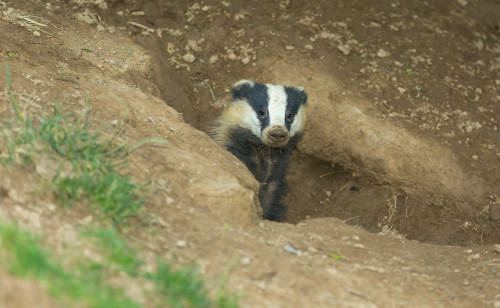Richard Holmes, director of infrastructure at Geobear - a specialist in ground subsidence - explains how ground engineers can protect roads while also safeguarding badgers, a legally protected animal.
Burrowing badgers create costly challenges for road stability. While badgers play a vital role in our ecosystems, their tunnelling activities and extensive setts, sometimes stretching over 100 meters, can lead to significant damage, with repair costs reaching millions of pounds.
The damage caused to road infrastructure by badgers is a common occurrence. In 2024 alone, badger activity costs millions of pounds in road maintenance and reconstruction.
In Lincolnshire, the A52 Seaholme Road in Mablethorpe collapsed after burrowing badgers weakened the ground beneath it. The badgers had dug two networks of tunnels to a depth of 1 to 1.5 metres.
Their extensive burrowing collapsed footpaths and caused sinkholes, adding to the complexity of the repair work. The damage in Lincolnshire resulted in a repair scheme costing approximately £120,000.
Badger activity in Leigh-on-Sea, Essex, caused disruption on an even greater scale.
To address the severe impact of badger activity, a two million pound scheme was initiated to stabilise Cliff Parade and the surrounding cliffs, and to repair pavements and highways compromised by burrowing.
The damage at Cliff Parade was first spotted in early 2023. However, relocation of the badgers was not possible at the time due to their hibernation period. As a result, multiple road closures were put in place, including Cliff Parade itself.
By 2024, the situation had worsened to the point where nearby homes were at risk.
Julia Smith, a resident of Cliff Parade, said: 'It's a complete nightmare. The stress is terrible. What about our homes?'
Surveying and safeguarding badger setts
Protecting both the railways and the badgers is a careful balancing act. Any work involving badger setts requires a licence from Natural England, as they are a protected species under UK law.
Construction work must avoid the sensitive breeding season from June 30 to December 1 to allow time for pregnancy, birth and rearing of cubs. Before any work can begin, an ecologist surveys the site to assess whether the sett is active, inactive or defunct.
This ensures all badgers are properly safeguarded. If a sett is active, it is monitored, and once badgers leave, nets are placed over the entrances to prevent re-entry. Monitoring continues for at least 21 days to confirm no badger activity remains before engineering works commence.
Once the badgers have safely relocated, ground engineers assess how to stabilise the compromised ground.
A ground-penetrating radar survey helps locate the most effective points to drill. In some cases, void filling must be done directly at the sett entrances. Technicians use an endoscopic camera inside the tunnels to monitor the repair process and ensure all voids are filled.
Road repair under pressure
Badger activity affects not only the road itself but also the surrounding road infrastructure. This was demonstrated when a highway embankment failed in Folkestone, Kent, due to badger burrowing activity, resulting in a landslip that covered the road and forced its closure.
Traditional underpinning was not an option due to the steepness of the embankment and challenging site access. Kent County Council turned to Geobear for an alternative solution, using their expertise in ground improvement and void filling.
Once the badgers had safely vacated the sett and were certified as absent by ecologists, the team overcame a difficult-to-access site to fill voids in the embankment.
The team adapted not only to the site but also to the environment. Technicians used a cherry picker to access the steep embankment and inserted injection tubes, up to six meters long, into the badger setts, deploying a specialist geopolymer material to expand and fill the voids.
The lightweight material expanded upon injection, filling the voids and strengthening the embankment, preventing collapse and enabling road surface repairs.
The works were initially planned over two shifts, Friday and Saturday. However, due to high winds forecast for Saturday, the team completed the entire project in an extended single shift on Friday.
Starting at 6:00 a.m. and working late into the evening, the team successfully filled all the setts, avoiding potential weather-related delays. The road reopened the next day.






